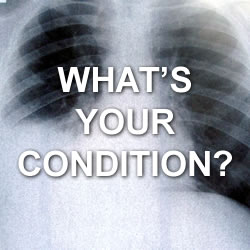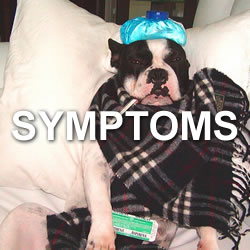Bioterrorism
Both natural and intentional biological threats pose significant threats and merit our nation’s attention to mitigate their impact - Bill and Melinda Gates
.jpg)
image by: Deadly Collections: Bioweapons, Laboratories, Terrorists, and Politics
HWN Recommends
Haunting spectre of bioterrorism
The Cobra Event” written by Richard Preston in 1998 is a science thriller which narrates a botched bioterrorism offensive on the USA. In the book, the perpetrator of the attack, clones a virulent smallpox genome with a highly contagious common cold virus, and cranks out a genetically engineered virus, codenamed “Cobra”. The resultant virus which is as contagious as common cold and as deadly as smallpox, manoeuvres itself to the brain of the infected person, where it replicates exponentially and annihilates the brain cells. As a consequence, of its relentless onslaught the infected person is left to die of a disease called “Brain-pox”. In 1998, when President Bill Clinton came across Preston’s…
Resources
 Designer bugs: how the next pandemic might come from a lab
Designer bugs: how the next pandemic might come from a lab
Why we need to take the threat of bioengineered superbugs seriously.
 Did Covid-19 Come From A Lab? Was It Deliberate Bioterrorism? A Biodefense Expert Explores The Clues
Did Covid-19 Come From A Lab? Was It Deliberate Bioterrorism? A Biodefense Expert Explores The Clues
Mother nature is a very efficient “bioterrorist.” We have seen this time and time again as new diseases have emerged, like Ebola, SARS, and henipaviruses. During the current pandemic, it’s been alleged that people created a new pathogen in the Wuhan lab - and even that it’s been released as a deliberate act of bioterrorism. So how could we determine definitively if Covid-19 was a naturally occurring or bioengineered outbreak? The simple answer is: it’s complicated.
 This Is What It Would Take to Turn a Virus into a Weapon
This Is What It Would Take to Turn a Virus into a Weapon
Melinda Gates recently declared that the biggest threat to humanity is a pandemic brought on by a bioterrorist attack.
 WMD Terrorism: The Once and Future Threat
WMD Terrorism: The Once and Future Threat
Biological attacks have the potential for the most catastrophic effects outside of nuclear weapons, but there are significant difficulties associated with attacks using living weapons. Aum Shinrikyo experimented with anthrax, botulinum toxin, cholera, Q fever, and even ebola, from 1990–95, but was unsuccessful due to unsophisticated delivery mechanisms and nonvirulent strains.17 The mechanism through which the lone actor Bruce Ivins chose to disperse anthrax-causing spores—a letter—was also unsophisticated and, fortunately, although his expertise and access allowed him to produce a sophisticated agent, it was not dispersed at a catastrophic scale.
 Aum Shinrikyo’s legacy of toxic terror
Aum Shinrikyo’s legacy of toxic terror
Modern terrorists have proved that they are willing to kill on a large scale, and that they will seek to acquire or develop WMDs to do so. Aum Shinrikyo’s toxic legacy and the threat of such an attack will only grow as technologies and expertise in chemistry, medicine and biology become more globalised in the 21st century.
 Bill and Melinda Gates think a weaponized disease may be the biggest threat to humanity — here's how worried you should be
Bill and Melinda Gates think a weaponized disease may be the biggest threat to humanity — here's how worried you should be
The biggest global risk that Melinda Gates can imagine within the next 10 years is "most definitely" a bioterrorism attack.
 How deadly pathogens have escaped the lab — over and over again
How deadly pathogens have escaped the lab — over and over again
Research into dangerous viruses and bacteria is important, but for the deadliest pathogens, it’s not clear the benefits are worth the risks.
 Report For Defense Department Ranks Top Threats From 'Synthetic Biology'
Report For Defense Department Ranks Top Threats From 'Synthetic Biology'
New genetic tools are making it easier and cheaper to engineer viruses and bacteria, and a report commissioned by the Department of Defense has now ranked the top threats posed by the rapidly advancing field of "synthetic biology." One of the biggest concerns is the ability to recreate known viruses from scratch in the lab. That means a lab could make a deadly virus that is normally kept under lock and key, such as smallpox.
The Threat Of Biological Warfare Is Increasing, And The U.S. Isn't Ready
Which brings me to the subject of biowar -- the use of microbes to attack target populations. This is not a new idea. Europeans gave Native Americans blankets tainted with smallpox during the early colonial period, knowing their lack of resistance to the disease would wipe out whole tribes. What is new today is that virulent pathogens -- microorganisms that spread disease -- can be readily spawned in laboratories.
There’s Toxicity, And There’s Toxicity
Now, all drugs have biological activity, or they wouldn’t be drugs. But some of them are definitely more active than others, and BTX is at the far end of the scale. To give you the idea, on a mg-per-kilo basis, I believe that its fatal dose is at least five orders of magnitude lower than Sarin nerve gas, a fact that will definitely make an industrial safety director sit down and think about career options. There are quite a few wildly toxic peptides and proteins, since they’ve had plenty of time for evolution to sharpen the spear points, but to the best of my knowledge, botulinum is the winner.
Toxins as biological weapons for terror—characteristics, challenges and medical countermeasures: a mini-review
Currently, some toxins are classified as potential biological weapons, although they have several differences from classic living bio-terror pathogens and some similarities to manmade chemical warfare agents. This review focuses on category A and B bio-terror toxins recognized by the Centers for Disease Control and Prevention: Botulinum neurotoxin, staphylococcal enterotoxin B, Clostridium perfringens epsilon toxin, and ricin.
A Three-Inch Bio-Detector Quickly Scans For All the Bacteria and Viruses We Know Of, All at Once
The Lawrence Livermore Microbial Detection Array (LLMDA) is but a one-inch wide, three-inch long glass slide, but packed in a checkerboard pattern within the device are 388,000 probes set to detect more than 2,000 viruses and about 900 bacteria.
America's bioterrorism labs have a disturbing safety record
Altogether, these incidents have been leading some to question whether current oversight of research on dangerous pathogens is sufficient and even suggest that some of this research isn't safe enough to continue.
Becoming Biohackers: The Long Arm of the Law
Is the rise of amateur gene enthusiasts working in make-shift labs a harmless pursuit or a potential bioterrorism threat? The third part of this biohacking series reveals the concerns of the FBI and the community, and why views differ on what to do about it.
Biological warfare and bioterrorism: a historical review
This article explains the concepts of biological warfare and its states of development, its utilization, and the attempts to control its proliferation throughout history. The threat of bioterrorism is real and significant; it is neither in the realm of science fiction nor confined to our nation.
Biological Warfare and its Cutaneous Manifestations
This article attempts to eliminate some of that mystery by discussing the history and background of biological weapons and by reviewing agents that cause cutaneous disease.
Biological Weapons and Virtual Terrorism
The ability to acquire key ingredients via the Internet, and to ‘hire’ individuals with the scientific knowledge to make biological weapons, means that bioterrorism is, and will remain, an omnipresent risk.
Bioterrorism Funding Withers As Death Germs Thrive In Labs, Nature
Biological weapons have a long and sordid history, from catapulting infected corpses to dropping bombs of plague-infected fleas. But what if a biological weapon were being developed and studied by scientists that had the potential to kill not a battalion or a city, but 150 million people?
Bioterrorism Preparing to Fight the Next War
Government concern about bioterrorism has also led to new federal restrictions on the handling of infectious agents; such rules have hampered both the ability of U.S. researchers to participate in international collaborations and efforts to train foreign scientists in this
Bioterrorism: A Dirty Little Threat With Huge Potential Consequences
We should never doubt that terrorist adversaries are intelligent, have sophisticated and ever-advancing capabilities to inflict devastating casualties, or fully lack the will to do so. To believe otherwise could potentially be a deadly mistake.
Cities Might Not Be as Prepared as They Think for a Bioterrorism Attack
Smallpox maliciously released in London would spread to several countries before governments could intervene, a new model predicts.
Could gene editing tools such as CRISPR be used as a biological weapon?
Concerns are also mounting that gene editing could be used in the development of biological weapons. In 2016, Bill Gates remarked that “the next epidemic could originate on the computer screen of a terrorist intent on using genetic engineering to create a synthetic version of the smallpox virus”.
Deadly Bioterror Threats: Six Real Risks
Bioterrorism is back in the news with word of a dangerous new strain of botulism, for which there is no antidote. The strain is so powerful, the researchers who discovered it won't release its genetic code until an antidote is found because they fear it will fall into the wrong hands.
Ebola Is Not a Weapon
Conspiracy theories are highly contagious. Here’s why they’re wrong.
How Ready Are We for Bioterrorism?
The specter of a biological attack is difficult for almost anyone to imagine. It makes of the most mundane object, death: a doorknob, a handshake, a breath can become poison. Like a nuclear bomb, the biological weapon threatens such a spectacle of horror — skin boiling with smallpox pustules, eyes blackened with anthrax lesions, the rotting bodies of bubonic plagues — that it can seem the province of fantasy or nightmare or, worse, political manipulation. Yet biological weapons are as old as war itself.
Is Bioterrorism the Most Terrifying Public Health Problem?
Fears of bioterrorism are overblown. We should be spending much more money, time, effort, and print (including e-print) on naturally occurring outbreaks, epidemics, and human behavioral risk factors.
The deadly bean: why ricin is used for bioterror
It's easy to make, but it's also not very effective as a biological weapon, scientists say.
The Pentagon Ponders the Threat of Synthetic Bioweapons
WHEN IT COMES to detecting new organisms that emerge from exotic places and cause global havoc, the US military is ready. The Pentagon operates infectious disease labs and surveillance networks in places like Kenya, Georgia, and Thailand, as well as a giant research center and vaccine-making unit just outside Washington, DC.
The Secret's in the Sauce: Bioterror at the Salsa Bar
In early September, 1984, a woman stood in front of the Taco Time salsa bar in The Dalles, Ore., holding a small plastic bag filled with light brown liquid. Quickly and furtively, she squirted the solution into the salsa bucket and poured a little into the salad dressing. The largest bioterrorist attack in United States history had begun.
The Secret's in the Sauce: Bioterror at the Salsa Bar
The attack on The Dalles Taco Time salsa bar and nine other restaurants remains the first, largest, and worst bioterrorism attack in the U.S.
The Specter of Chemical and Biological Weapons
Efforts to harness the power of toxic chemicals and deadly organisms have been at the core of chemical and biological attacks throughout history. This package chronicles such incidents before and after Syria's recent alleged chemical weapon attack on civilians outside Damascus.
What Biosecurity and Cybersecurity Research Have in Common
They have similar dangers—and similar potential benefits.
“Designer bugs”: how the next pandemic might come from a lab
Why we need to take the threat of bioengineered superbugs seriously.
 Haunting spectre of bioterrorism
Haunting spectre of bioterrorism
Biological agents have been used since antiquity to attack the enemies. The ancient Hittites marched victims of plague into the cities of their enemies; Herodotus talks of archers’ firing arrows dipped in manure to cause infection. In 650 BC, Assyrian politicians dumped fungus from rye into their opponents’ wells, causing people to suffer from fatal ergot poisoning.
The Pandora Project
We are the students and faculty of the George Mason University Schar School of Policy and Government Biodefense program. This site’s goal is to provide a knowledge hub for biodefense related issues and to share our work with the world.
Bioterror
Welcome to the companion Web site to "Bioterror," originally broadcast on November 13, 2001. The film follows three New York Times reporters as they delve into the murky past of bioweapons research and grapple with the current threat of anthrax and other attacks.
1st SPOT Bioterrorism
Webliography, articles, links and resources.
CDC
Some bioterrorism agents, like the smallpox virus, can be spread from person to person and some, like anthrax, can not. For information on which bioterrorism agents can be spread from person to person, please see the alphabetical list of bioterrorism agents.
CIDRAP
The Center for Infectious Disease Research and Policy (CIDRAP; "SID-wrap") is a global leader in addressing public health preparedness and emerging infectious disease response. Founded in 2001, CIDRAP is part of the Academic Health Center at the University of Minnesota.
Federation of American Scientists
Biosecurity and biodefense resource
Health Canada
Chemical, biological, radiological, nuclear and explosive (CBRNE) events refer to the uncontrolled release of chemicals, biological agents or radioactive contamination into the environment or explosions that cause widespread damage. CBRNE events can be caused by accidents or by terrorist acts.
Journal of Bioterrorism & Biodefense
Understanding of microbial life forms allowed us to combat numerous diseases and prevent ourselves from harmful pathogens. On the contrary, hatred among ourselves diverted our precious scientific knowledge to harm each other and gave rise to the biological warfare in terms of bioterrorism. The journal considers different topics under the biodefense and bioterrorism subject.
MedlinePlus
Biodefense and bioterrorism news, articles, information.
Occupational Safety and Health Administration
The use of micro-organisms to cause disease is a growing concern for public health officials and agricultural bodies. The terrorist attacks on September 11, 2001 and the subsequent bio-terrorist releases of anthrax have led to an increased awareness of workplaces as possible terrorist targets.
Rand
The threat of biological weapons poses unique challenges for government officials charged with devising immediate and longer-term response plans. RAND has developed exercises to train and evaluate the preparedness of state and local public health agencies to respond to bioterrorism. RAND researchers have also examined the longer-term psychological consequences of bioterrorism and created guidelines to improve individual preparedness for chemical, radiological, nuclear, and biological attacks.

Introducing Stitches!
Your Path to Meaningful Connections in the World of Health and Medicine
Connect, Collaborate, and Engage!
Coming Soon - Stitches, the innovative chat app from the creators of HWN. Join meaningful conversations on health and medical topics. Share text, images, and videos seamlessly. Connect directly within HWN's topic pages and articles.













